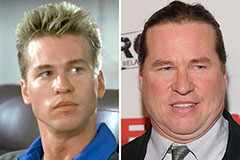The writer is making a number of good pointers related to Flushing Food Down the Toilet? as a whole in this great article underneath.

Introduction
Many individuals are commonly confronted with the issue of what to do with food waste, specifically when it comes to leftovers or scraps. One usual concern that develops is whether it's alright to purge food down the toilet. In this short article, we'll look into the reasons why people may take into consideration purging food, the repercussions of doing so, and alternative techniques for proper disposal.
Reasons why people may think about purging food
Lack of awareness
Some individuals might not recognize the possible injury brought on by flushing food down the toilet. They might erroneously believe that it's a harmless practice.
Comfort
Purging food down the bathroom may appear like a quick and easy service to getting rid of undesirable scraps, specifically when there's no neighboring trash bin available.
Laziness
Sometimes, people might simply pick to flush food out of sheer negligence, without considering the effects of their actions.
Effects of flushing food down the toilet
Ecological impact
Food waste that winds up in rivers can contribute to air pollution and harm water communities. In addition, the water utilized to flush food can stress water resources.
Pipes concerns
Flushing food can cause clogged pipes and drains, creating pricey plumbing repair work and troubles.
Sorts of food that should not be flushed
Fibrous foods
Foods with fibrous textures such as celery or corn husks can get tangled in pipes and trigger blockages.
Starchy foods
Starchy foods like pasta and rice can take in water and swell, causing obstructions in pipes.
Oils and fats
Greasy foods like bacon or cooking oils ought to never ever be flushed down the commode as they can strengthen and trigger obstructions.
Appropriate disposal techniques for food waste
Using a garbage disposal
For homes geared up with waste disposal unit, food scraps can be ground up and purged via the pipes system. Nonetheless, not all foods appropriate for disposal in this way.
Recycling
Specific food product packaging materials can be recycled, decreasing waste and minimizing ecological influence.
Composting
Composting is a green method to throw away food waste. Organic materials can be composted and utilized to enrich dirt for gardening.
The value of proper waste monitoring
Decreasing ecological harm
Appropriate waste monitoring methods, such as composting and recycling, aid minimize pollution and protect natural deposits for future generations.
Protecting plumbing systems
By preventing the technique of flushing food down the toilet, property owners can stop pricey pipes fixings and maintain the integrity of their pipes systems.
Verdict
Finally, while it might be alluring to purge food down the bathroom for comfort, it is necessary to recognize the possible effects of this activity. By taking on appropriate waste administration practices and dealing with food waste responsibly, people can add to healthier plumbing systems and a cleaner atmosphere for all.
FLUSH FOOD DOWN THE TOILET?
FLUSHING FOOD CAN CAUSE BLOCKED DRAINS IN YOUR HOME
All of the plumbing fixtures in your home are connected to the same sewer pipe outside of your home. This outdoor sewer pipe is responsible for transporting all the wastewater from your home to the Council sewer mains. Even small pieces of food that go down the kitchen sink can cause problems for your sewer. It should therefore be obvious that flushing larger bits of food, such as meat, risks a clog in either the toilet itself or the sewer pipes. Flushing greasy food is even more problematic because oil coagulates when it cools, coating the interior lining of your pipes.
THE TOILET IS NOT A BIN
Food isn’t the only thing that people shouldn’t be flushing down the toilet. People use the toilet to dispose of all kinds of things such as tampons, makeup wipes, dental floss, kitty litter and even underwear. Water goes to great lengths to educate residents about the high costs and stress placed on wastewater treatment systems simply from people flushing the wrong stuff down the toilet. It costs taxpayers millions of dollars each year, and homeowners thousands in blocked drain repairs.
FLUSHING FOOD IS A WASTE OF WATER
Flushing food is a waste of our most precious resource - water. In June this year Level 1 water restrictions were introduced to protect water supply from drought conditions. Much of New South Wales continues to be affected by prolonged drought with recent figures revealing up to 97 per cent of the state remains in drought. Depending on whether you have a single or dual flush toilet, every single flush uses between five and 11 litres of water. In the current climate this is a huge amount of water to be wasting on flushing food that should be placed in the bin (or better yet, the compost).
https://www.jabplumbingsolutions.com.au/blog/can-you-flush-food-down-the-toilet

I'm certainly very taken with Think Twice Before Flushing Food Down Your Toilet and I hope you enjoyed the entire entry. Are you aware of somebody who is curious about the subject? Take a moment to promote it. I am grateful for your time. Kindly come by our blog back soon.
Call Today
 Ben Savage Then & Now!
Ben Savage Then & Now! Val Kilmer Then & Now!
Val Kilmer Then & Now! Michelle Trachtenberg Then & Now!
Michelle Trachtenberg Then & Now! Mason Reese Then & Now!
Mason Reese Then & Now! Pauley Perrette Then & Now!
Pauley Perrette Then & Now!